As an Amazon Associate Playpedalsteel.com earns from qualifying purchases. This page contains affiliate links.
The pedal steel guitar’s sound can be accentuated by using effects, and the instrument’s distinct sound lends itself well to the use of delay, compression, reverb, and EQ. Having a pedalboard that houses and powers your effects pedals can be a nice, convenient way to take advantage of these.
Effects can offer a player more sonic options for shaping their tone, and can also be a way to create textures within songs. Often, delay can add more depth to a pedal steel’s reverb, while compression and EQ can help control your dynamics and frequency range.
Whether you’re looking for different tones, or experimenting with various sounds, here are effects that are good to use with pedal steel guitar and options for creating a pedalboard for your rig…
Creating Your Pedalboard
There are endless possibilities for creating a pedalboard, just ask any guitar player or player that loves gear. Each one is unique to the player, the sound(s) they wish to create, and the functionality/design of it.
One thing is for sure though – having a pedalboard can be a quintessential tool for shaping your tone in your playing environments. For any style of music, having a reliable and versatile pedalboard can help you adapt your sound to the music around you.
For instance, adding some distortion or overdrive can be great when playing a rock or blues song. Or if you’re playing a slower tempo country song, having some delay and compression can add a lot of texture to your tone and the song.
When creating a pedalboard for pedal steel, here are some of the main things you’ll want to consider:
- The amount of pedals you’ll have on the board (this will affect the size/space of your board
- How you’ll power the pedals on the board (and where you’ll place the power supply on the board)
- The types of effects/pedals you’d like to use
- The cables you’ll use for connecting the pedals
- How you’ll attach the pedals to the board
Let’s look at some of these variables and options for your board…
The Size of the Board
You’ll certainly want to consider the size of your pedalboard, and where you’re going to be placing it in regards to your steel guitar.
With pedal steel, it is likely that both of your feet are being used to play the instrument – so you may want to consider having the board raised next to you so that you can engage them with your hand.
I find that with steel guitar, usually 3-4 effects pedals (along with your tuner) can go a long way to give you the tones you are seeking within most genres. Of course, there is no rule set in stone, and you may find it helpful to have more or fewer pedals for your playing.
A board that holds 3 or 4 pedals in one row can be nice and compact for pedal steel, and can be easier to transport. I like using Pedaltrain’s Nano+ or Classic Jr (view on Amazon) for most of my playing situations, and then having a larger pedalboard for fun and experimenting.
I use a Pelican 1510 case (click to see on Amazon) for storing and transporting my smaller pedalboard, which is great for holding extra cables and accessories as well. Another thing I really like about this case is that you can put a smaller pedalboard on top of it to raise it off the ground as you play so that you can engage it with your hands.
Better yet, it has wheels and a handle for easy transportation – and you can carry it on a plane and fit it in most carry-on overheads with no problem (great for fly-dates or touring). These cases often come with foam that you can easily custom fit to your pedalboard and gear, which is great for protecting it and keeping movement of your gear minimal when moving it.
The Pedaltrain Classic 2 (available on Amazon) is a good choice if you’re looking for a larger pedalboard than the Nano+ or Classic Jr.
Power Supply
One of my favorite things about having a reliable and highly functional pedalboard is the ability to cleanly and easily power your pedals.
I’ve been using the Voodoo Lab Pedal Power 2 Plus (view on Amazon) for over 10 years, and love how easy it is to use and how low-hassle it is. If you use a nice power supply like this, then you’ll likely never want to mess with the cheaper quality OneSpot cables and how messy the cords can be around your gear. Plus, powering your effects with a nicer supply is likely to make your actual tone and sound better (just like using nice 1/4 inch cables for your pedal steel or guitar.
Not all power supplies come already built into a pedalboard, and not all pedalboards are pre-made with a specific-sized power supply in mind. Basically, you’ll need to find a way to house your power supply on your board in a way that fits and is functional.
I suggest having a professional do this for you, unless you have the expertise for these kinds of projects – or sometimes a pedalboard is built to accommodate a power supply and will provide instructions for easy installation. If you’re using a Pedaltrain Classic, Novo, or terra Series board, you can purchase Voodoo Lab mounting brackets (view on Amazon) that are compatible with the Pedal Power 2 Plus and these boards.
Cables and Attaching the Pedals
For cables, I highly recommend Mogami’s Gold 6 inch cables (view on Amazon) to connect your effects pedals. You’ll want to check to see if it’s a better fit for your pedals to use a right angle, or straight cable. This is usually dependent on where the jacks are located in regards to your pedal(s).
To run a cable from your volume pedal to your pedalboard, I recommend using a Mogami Gold 3 ft. cable (click to see on Amazon), and a Mogami Gold 18 ft. cable (view on Amazon) to reach your amp from the last output of your pedalboard.
Some pedalboards will provide adhesive velcro strips, or another means of attaching your pedals to the pedalboard. Heavy duty velcro (view on Amazon) that adheres to a surface is a great way to attach your pedals if your pedalboard didn’t come with any other options.
Effects To Use With Pedal Steel
Oftentimes the most enjoyable part about creating and using a pedalboard is choosing and playing with the effects themselves. Let’s check out some nice options of effects pedals to use with steel guitar…
Using Delay
One of the neat things about pedal steel, is that you can use a delay pedal to emphasize your reverb even more, and add depth and thickness to it. This allows some of the common applications of pedal steel within songs (pedal raises, melodic fills, etc.) to really stand out, and fill in certain areas of the frequency range that aren’t as occupied by other instruments.
Many pedal steel amps come with a quality sounding reverb, so often there is no need to tonally alter the reverb itself that you are using. However, by adding the effect of delay to your signal chain, you can broaden the reverb and add more dimension to your sound.
Using delay for pedal steel also can be a way to add further tail-end to the notes you are sustaining with the bar. This can be a way to accentuate your vibrato, alter the sound of a notes’ sustain, and add more expressive options to tail-end of the notes you play.
Here are some good options for delay pedals for pedal steel…
Delay Pedals for Pedal Steel

Boss DD-8 Delay (click to view on Amazon): It’s really helpful to use a delay pedal that gives you enough options in regards to delay time, decay time, and levels. This is one of my favorite pedals to use for pedal steel, and it’s nice that it gives you plenty of control over these parameters.

Strymon El Capistan dTape Echo (link to Amazon): This is a good option if you’re looking for a warmer, more textured sound for your delay and reverb, especially if you’re playing pedal steel in more modern contexts like alt-country, indie rock, pop, rock and roll, or blues tunes.

EarthQuaker Devices Avalanche Run V2 (link to Amazon): This pedal’s knobs and settings will give you plenty of control over delay parameters like the DD8 pedal, and it will also have depth to it tonally.
Using a Compressor as an Effect
Immediate benefits of using compression with pedal steel can be…
- Adding more thickness to your sound for a rounded and warm tone on ballads.
- Providing a more stable overall dynamic range if your playing volume levels fluctuate a lot during a song.
- Giving individual notes more punch and sustain, without being overly aggressive sounding to a listener’s ears.
Some slide players (such as Lowell George) have utilized compression in their playing to create a distinct sustain of notes played, which is often recognizable to listeners. If you use compression effects for pedal steel in this manner, then just like delay you’ll add more options for expressing notes as they sustain.
Compressors on outboard gear in recording studios can also add a tonal warmth and overall balance to your sound. Even if compression is not being produced with the input signal, these compressors can affect the signal in other ways, often with the use of tube preamps.
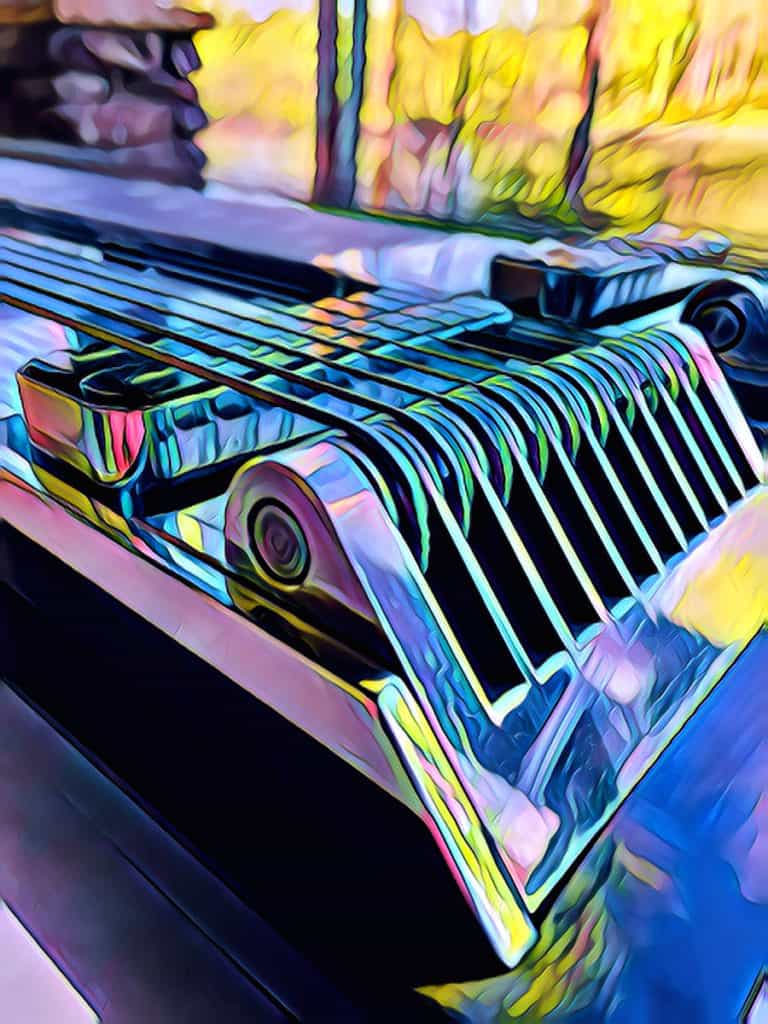
When recording and mixing pedal steel, compression can be used to add more balance and control to the pedal steel’s sound in the mix. This can be used to as a way to make the pedal steel blend better in the overall mix, and also give you the ability to boost its overall volume without sounding harsh and abrasive to listeners.
Here are some compressor pedals that are worth checking out for pedal steel…
Compressor Pedal Options for Pedal Steel

Cali76 Compact Deluxe (click to view on Amazon): When recording pedal steel, oftentimes producers and engineers will run the pedal steel through an outboard compressor or tube preamp, which can give it a nice and warm sound. The Cali76 pedal will give you a similar option in regards to tone and functionality, but in a compact stomp-box pedal.

Keeley Compressor Plus (link to Amazon): This is a nice and tidy compressor pedal, and is great to use for increasing your sustain without compromising your tone. This is a favorite among guitar players for its functionality and sound.
Distortion/Overdrive
One of the best uses for having a distortion pedal on your board is to quickly be able to dial in a gritty tone that makes you sound like you’re playing through a tube amp with distortion. This can be beneficial so that you don’t have to bring a different amp (or rig) to get this sound at gigs or when playing at home.
Some bands and artists will have a broad repertoire of songs that span multiple genres. In these playing scenarios, you may want to add distortion to your signal for blues and rock tunes without switching amps. A distortion or overdrive effect can be a great way to do this.
Also, using distortion with pedal steel can often add more variety and accentuation possibilities for sliding into notes with the bar. Just like Duane Allman’s sound on electric slide guitar, you can use the distortion with the sustain and vibrato of notes to resonate with listeners in a characteristic way.
Using a distortion or overdrive effects pedal can give you the capability to switch back to a cleaner tone for songs that don’t need as much of this effect. Here are some options for pedal steel guitar…
Distortion & Overdrive Pedals for Pedal Steel Guitar

Fulltone OCD Obsessive Compulsive Drive (click to see on Amazon): This pedal will add a full range of distorted tones, and can be nice to use if you’re using a solid-state amp that only gets a clean tone. It’ll also sound great through a tube amp, and add even more harmonic richness to the tubes and distortion.

Ibanez TS9 Tube Screamer (link to Amazon): I like using this pedal whenever I’m using a tube amp that has a nice clean tone, but I’d like to push the tubes a little more for some distortion. This one works great with Fender tube amps, like Twin Reverbs for instance, and can be a quick and easy way to add grit to the sound.
The Effect of Reverb
Although most amps will have reverb built into them, I was surprised to find that some reverb effects sound better tonally than some amps’ reverb. This can be especially true when recording and mixing pedal steel, where many plate reverb emulator plug-ins can sound great in a production. Even better, some professional recording studios will have actual physical plate reverb that you can utilize.
Since pedal steel thrives in reverb, and is utilizing reverb so much, it can be really beneficial to have a reverb unit that is high in sound quality. Spring reverb is commonly used for pedal steel and guitar, and can give you a more “classic” reverb sound that is heard on many recordings. Many amps utilize this type of reverb.
Reverb is such an important effect for pedal steel because it adds a lot of texture to the notes that you sustain, especially when combined with vibrato, a volume pedal, and a pedal steel’s high output pickups. Also, it is a natural sounding aspect of the physics of sound and music, so it helps create a sonic environment that listeners perceive as pleasing.
Check out these reverb effects pedals for pedal steel…
Reverb Pedals for Pedal Steel

TC Electronic Hall of Fame 2 (click to view on Amazon): This pedal was a real game changer for me as far as realizing that reverb effects pedals can actually sound better than some amps’ reverb. This pedal is simple to use, but has a lot of tonal versatility, and I use it a lot instead of the reverb on some of my amps.

Strymon blueSky Reverberator (link to Amazon): If you’re looking for more detail and warmth for your reverb, compared with other pedal options (or your amp’s reverb), this is a great one to use. I love using plate reverbs with pedal steel, because of their crisp sound and presence, and this pedal also has this option.

Strymon NIGHTSKY Time-Warped Reverberator (link to Amazon): A cool reverb pedal, which is almost like a toy to use with pedal steel because of how much reverb shaping you can do. This is a fun one to experiment with, especially using the glimmer, shimmer, voice, and mod options.
EQ or Equalization
Most amps will have some EQ options, but can be limited for dialing in the true potential for a pedal steel’s sound. The frequency range for pedal steel guitar is actually quite broad compared to some other instruments, and it has the ability to play notes that are in a bass guitar’s range.
Furthermore, you can play notes on pedal steel that are higher pitched than a regular guitar, especially when playing harmonics. You can also use EQ to alter the sound of the pedal steel’s mid frequencies. Check out this article I wrote that dives deeper into using EQ for pedal steel.
I really enjoy using EQ to add more presence and crispness to the high end of the pedal steel, and to cut out some frequencies in the low-mid range that can sound muddy. Also, you can add a little more bite to the pedal steel’s mid range to make it sound more like an electric guitar, by slightly boosting 2kHz.
Here are some EQ pedal options worth checking out for pedal steel…
EQ Pedals

BOSS Graphic Equalizer EQ-200 (link to Amazon): This pedal is nice to have for pedal steel because of the 12.8kHz and the 400 Hz controls. I’ll boost the 12.8k setting to add more high end presence and brightness/sparkle if I need it, and cut the 400 setting if the room I’m playing in sounds muddy.

Boss Equalizer GE-7 (click to see on Amazon): This is a more compact EQ pedal, and can be nice for adding high end with the 6.4kHz control, and it also has the 400 Hz control if you’re trying to control some muddiness. For mid frequencies on my pedal steel that I’d like to sound more like an electric guitar, I’ll sometimes boost the 1.6kHz setting to help it cut through a mix of instruments.
Thanks for checking out this page, hope it is helpful and makes playing more enjoyable! If you’re interested in diving deeper into playing E9 pedal steel, check out these resources and guides…
The Chord Guide for E9 Pedal Steel (E-Book, Digital Download)
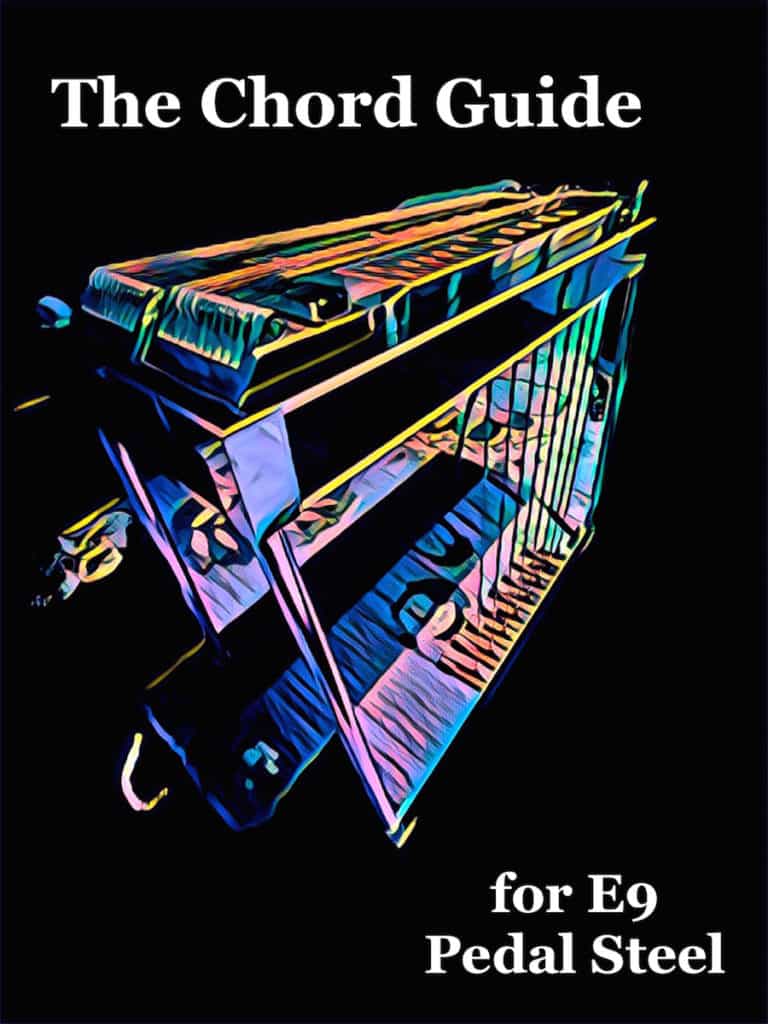
Learn the chords on the E9 neck in a way that makes playing simple and enjoyable…
- Almost Every Chord You’ll Ever Need for E9
- Intuitive and Easy to Use
- Make Use of Pedal and Lever Combinations
- Example Tabs of Chord Movements
- Easily Utilize the Nashville Number System
- Great For Any Key and Style of Music
Includes a bonus section of over a hundred pages of extra chord charts, key references, and more!
You may also like…
200 Country Riffs & Licks for E9 Pedal Steel
Add these country licks to your playing repertoire…
- Easy to Read Format
- Includes Rhythmic Notation
- Playing Over Chord Changes
- Great for Country, Alt-Country, & Honky-Tonk Styles
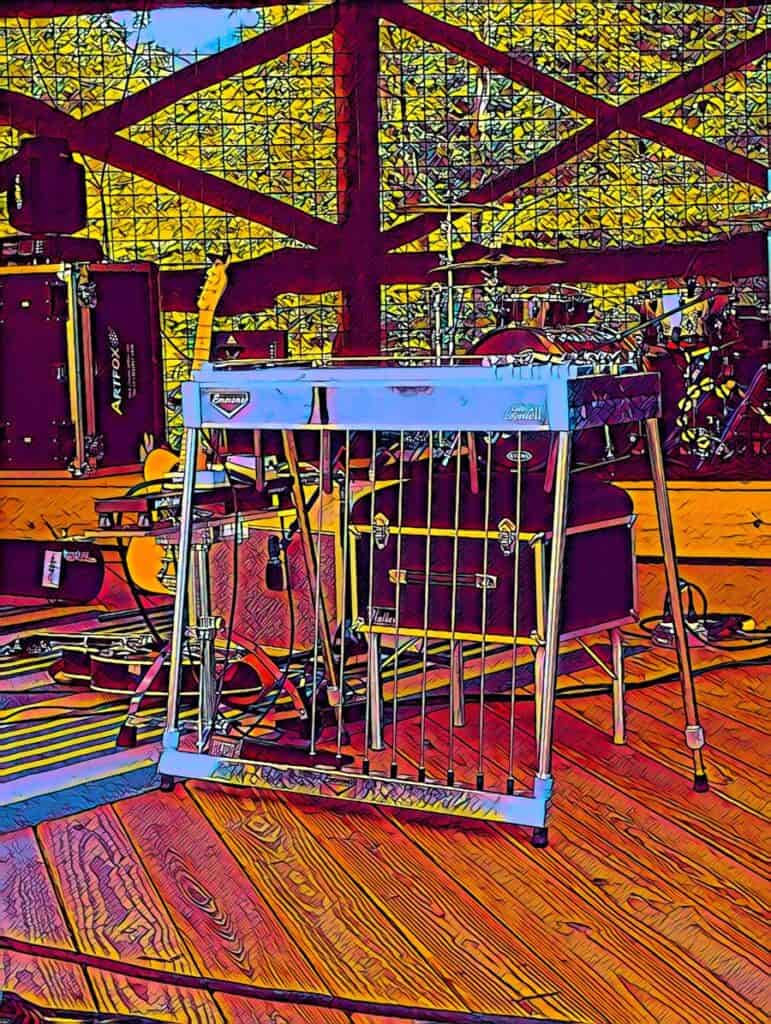
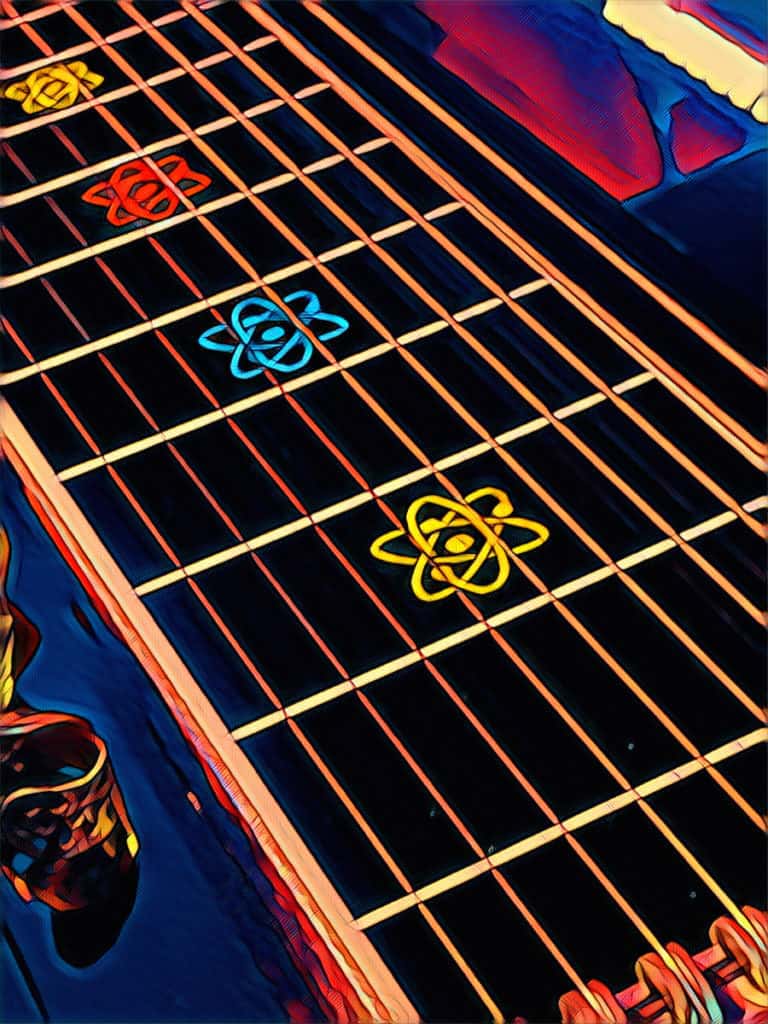
The Scale Book for E9 Pedal Steel
Over 1,000 Pages with Tabs and Diagrams!
- Easy to Use Reference for Practicing
- All Major and Minor Pentatonic Scales, Modes, Major Scales
- All Keys, and Covers the Fretboard
- Includes Pockets of Scales
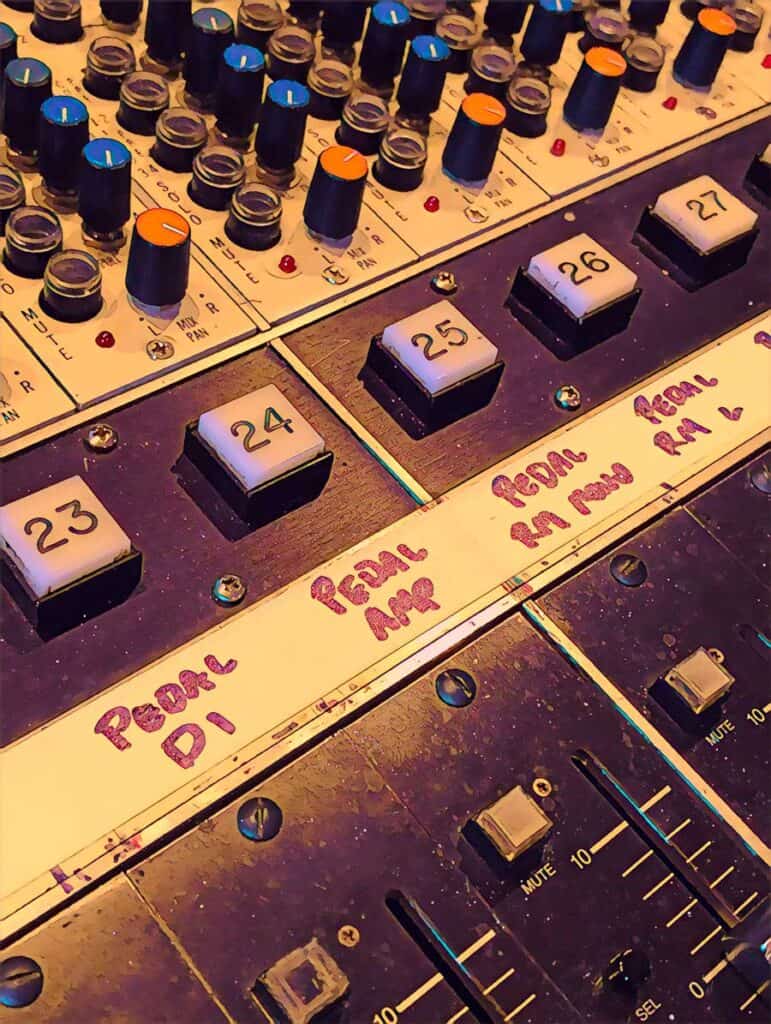
Harmonized 6ths
- Hundreds of Riffs, Licks, and More
- How To Play Sixth Intervals on the E9 Neck – Over Any Chord
- Utilizes The Pedals and Knee Levers

Right Hand Picking & Blocking
- An In-Depth Guide to Picking and Blocking
- Perfect Your Technique
- Includes Graphics, Illustrations, & Practice Exercises